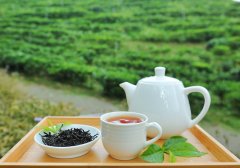"Red Cherry Project" in Ethiopia
Yega Xuefei, as a favorite bean for beginners, how does it make everyone like it? first of all, we can talk about the background of Yega Xuefei. Yejashafi is a small town in Ethiopia and Bia. it used to be part of the Sidamo producing area, but it has been independent in recent years and is deeply loved by the public in recent years because of its unique flavor.
In the small town of Yejashafi, which is 1700-2100 meters above sea level, the planting method and the flavor of the producing area are so outstanding that an independent producing area has been set up. Yejashafi's coffee trees were first planted by monks in Europe and later transferred to farmers or cooperatives. Yega Sheffield is actually built by surrounding coffee communities or cooperatives, including: Hafusha, Hama, and Biloya. This spring-like "wetland" gives birth to a unique regional flavor of citrus and flowers. This sun-tanned cherry on the front street actually refers to the coffee beans in the "Red Cherry Project".
The "Red Cherry Project" is a program to improve the quality of coffee beans on small-scale farms. We all know that Yegashifi coffee beans are mainly responsible for farmers or cooperatives, so we put forward such a plan to improve the quality of coffee beans on small-scale farms. In fact, the "Red Cherry Project" is not only to improve the quality of coffee beans, but also to obtain more objective purchase prices in improving the quality of coffee beans. At the same time, it gives farmers a good motivation to do more carefully in every process of collection and processing. The quality of coffee beans is not only good news for coffee lovers, but also better feedback for farmers who work hard at the bottom. The "Red Cherry Project" is not just the sun. That's why the sun-tanned cherries refer to the coffee beans in the "Red Cherry Project". The "Red Cherry Project" also has water washing, sun exposure and so on. The "Red Cherry Project" must pick all red fruits by hand, so it is difficult to pick, the quality is strong, and the yield will be relatively less.
The "Red Cherry Project" brings better economic benefits to grass-roots farmers and some small-scale farms, which slowly promotes the economic income of farmers and the development of coffee culture, and brings room for development for all people associated with coffee.
Important Notice :
前街咖啡 FrontStreet Coffee has moved to new addredd:
FrontStreet Coffee Address: 315,Donghua East Road,GuangZhou
Tel:020 38364473
- Prev

Where is black tea produced? where is the birthplace of black tea? is black tea also produced in Taiwan?
Taiwanese love to drink tea, and many parts of Taiwan are also rich in tea. For example, Oriental Beauty and Tieguanyin are very popular kinds of tea. But did you know that apart from imported Assam black tea and Ceylon black tea, black tea is also produced in Taiwan? The flavor is not imported from the ship at all, and Huigan quenches thirst! Let's learn about Taiwan black tea now.
- Next

2020 Ethiopian Coffee Bean COE Excellence Cup COE22 Arsi
The full name of COE is Cup Of Excellence, which means a perfect cup of coffee, also known as COE Excellence Cup. The COE competition, first held by the Coffee Excellence Organization (ACE) in Brazil in 1999, is currently the most well-known and authoritative boutique coffee bean competition in the world. COE competitions are usually held once a year, on a country-by-country basis (usually 500 manors are screened and less than 30 are left)
Related
- Beginners will see the "Coffee pull flower" guide!
- What is the difference between ice blog purified milk and ordinary milk coffee?
- Why is the Philippines the largest producer of crops in Liberia?
- For coffee extraction, should the fine powder be retained?
- How does extracted espresso fill pressed powder? How much strength does it take to press the powder?
- How to make jasmine cold extract coffee? Is the jasmine + latte good?
- Will this little toy really make the coffee taste better? How does Lily Drip affect coffee extraction?
- Will the action of slapping the filter cup also affect coffee extraction?
- What's the difference between powder-to-water ratio and powder-to-liquid ratio?
- What is the Ethiopian local species? What does it have to do with Heirloom native species?

